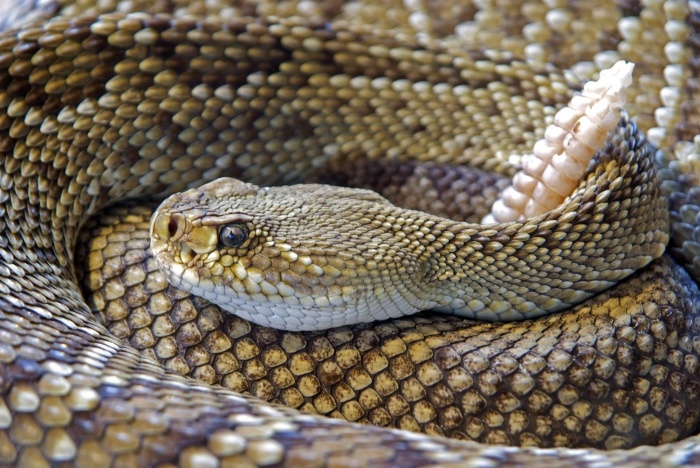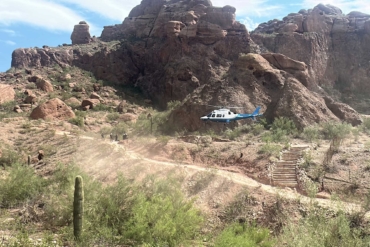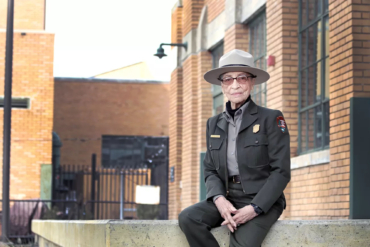It’s been a hot year. And in many areas, that means snakes! Here are some tips to identify and avoid rattlesnakes.

On a training run in southern California, skipping through a rock garden, I spun through a corner, holding my pace. And there it was under my feet: A three-foot long, three-inch thick rattlesnake.
For anyone who spends time outdoors, rattlesnakes can be a very real hazard. So we gathered some tips from Johns Hopkins and the CDC to cope with North America’s premier pit viper.
Rattlesnake Facts
What It Is: Rattlesnakes are a species of North American venomous pit vipers, named after the heat-sensing “pits” located between each eye and nostril.
How To Identify: The first signs of the rattler will likely happen before you see it. Namely, the tell-tale rattle will raise the hair on the back of your neck.
While the rattlesnake has a distinctive diamond scale pattern, so do other imitators. The fat, triangular head, thin neck, and hooded elliptical (cat) eyes are common signs. The distinctive series of beads on the tail will tell you it’s a rattler, but these can be missing or broken.
Where It’s Found: Rattlesnakes are the only true North American viper. More than a dozen species of rattlesnakes exist in the U.S., and they are native to just about every state in the lower 48. Arizona alone claims 13 different species of rattler.
Cold-blooded by nature, rattlesnakes are only active certain times of the year, generally when outside temperatures are over 60˚F. They are most active when the temperatures are over 80˚F.
How To Avoid Rattlesnakes
- Listen: “Don’t call me, I’ll call you.” Traveling in rattler country, it can be impossible to avoid a snake. You can’t spook a snake like a bear. They will “feel” you coming through the vibrations of your feet pounding on the ground, and by sensing your body heat. Rattlesnakes use their rattle to signal their presence.
- Stay on trail: Snakes are looking for food and food is usually found hiding in deep brush or piles of wood or rocks. The best way to avoid a snake is to stick to the trail, where there will be less chance of finding rodents and fewer places for a snake to hide.
- Use trekking poles: If you are tromping off trail, wear long pants, ankle supported leather boots and keep your hands out of places you can’t see. Use your trekking poles to probe for safe zones to step.
If you hear the “tsssss tsssss tssssssss” of the rattle, eyes up. This is your warning sign that a snake may be nearby. Don’t move, find the locations of snake, and slowly walk away.
If you see a snake that looks like a rattlesnake, give it berth. Don’t poke at it, try to make it rattle, or (obviously) try to pick it up. The snake will eventually move along.
Rattlesnake Bites
Got bit? Call 911 and try to stay calm. This can slow the spread of venom.
- Let it bleed for 30 seconds. This is the body’s way of flushing the wound
- Immobilize the bite area. This reduces the amount of blood circulating the venom
- Wash the bite area with soap and water to prevent infection
- Keep the bitten area still and lower than the heart
- Cover the area with a clean, moist compress to reduce swelling
- Monitor breathing and heart rate
- Remove rings, watches, and constrictive clothing around the bite so swelling can occur
- Remember the time of bite. The first responder will need to know
- If you have a pen, circle the bite and mark the time of the bite. Redraw the circle around the site over time to show progression
- If you can, identify the snake. The medical team will want to know the correct antivenom to administer
In the backcountry?
- Do the above, but get to help as soon as possible
- Monitor vitals: pulse, temperature, rapid breathing, signs of shock
- Keep the heart rate low. This reduces circulation of venom in the system
- Hike out slowly. If necessary, carry the victim out
Do NOT:
- Don’t pick the snake up. Even a dead snake can bite
- Don’t apply a tourniquet
- Don’t cut the wound with a knife
- Don’t try to suck the venom out
- Don’t apply ice
- Don’t drink alcohol or caffeinated beverages
Worst Case Scenario: Snakes bite between 7,000 and 8,000 people each year. It’s often young men with bites to their hands. But it’s important to note that death is rare. Usually eight deaths a year.
Because untreated venomous snake bites can be deadly, knowledge is the best defense.







